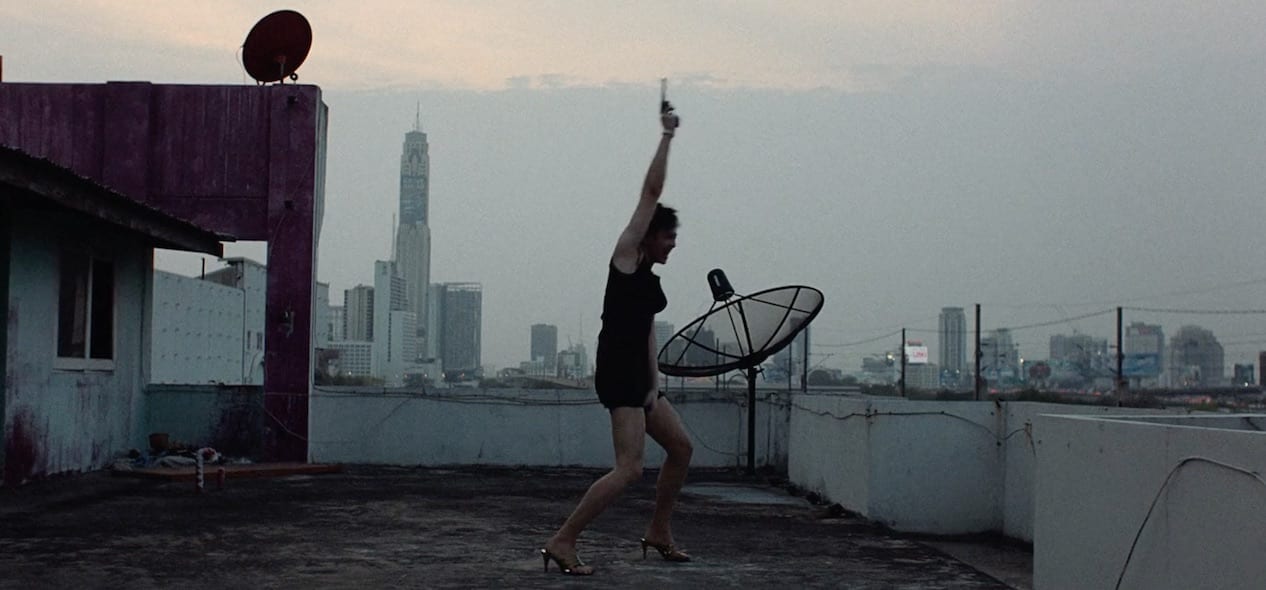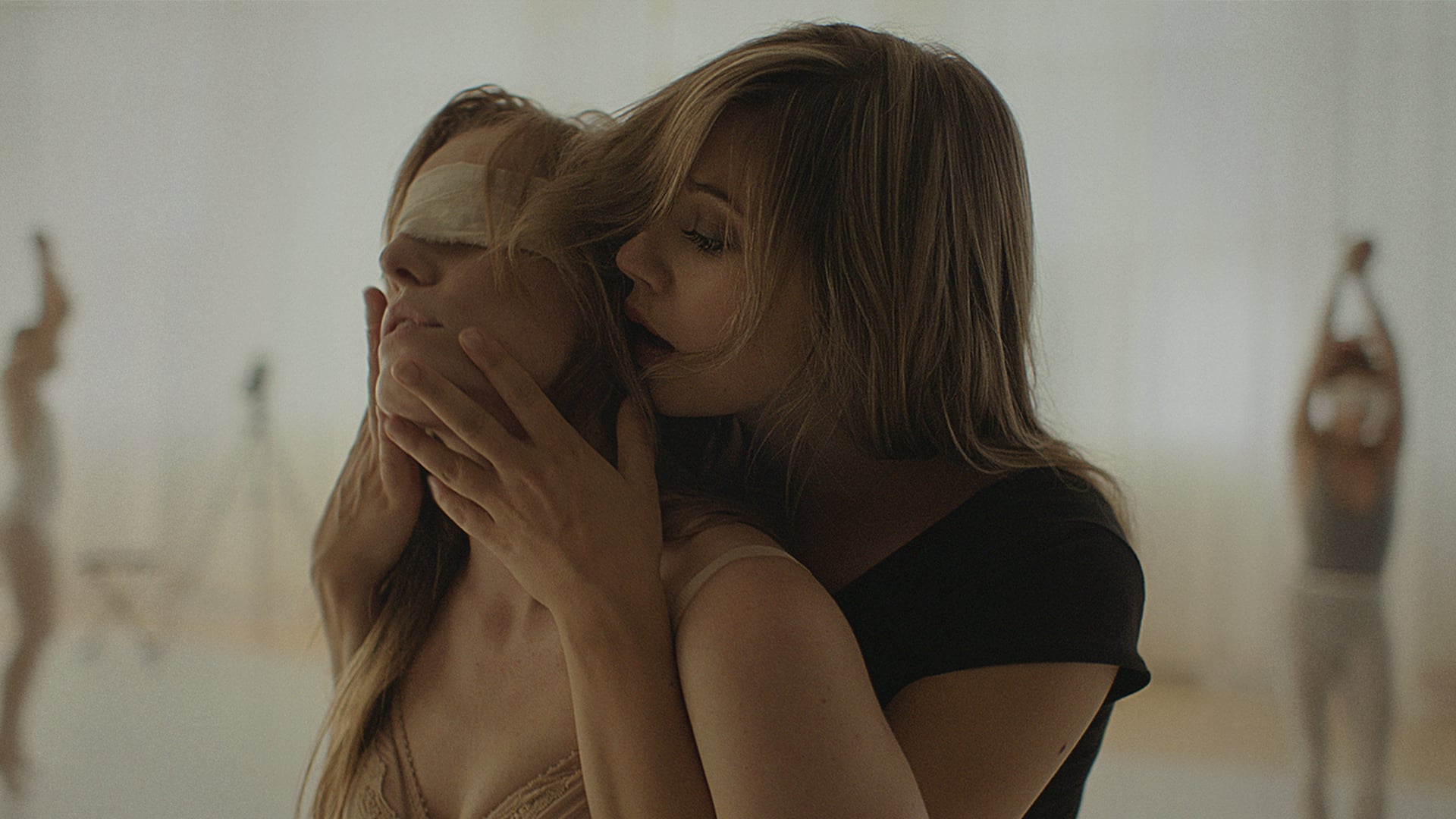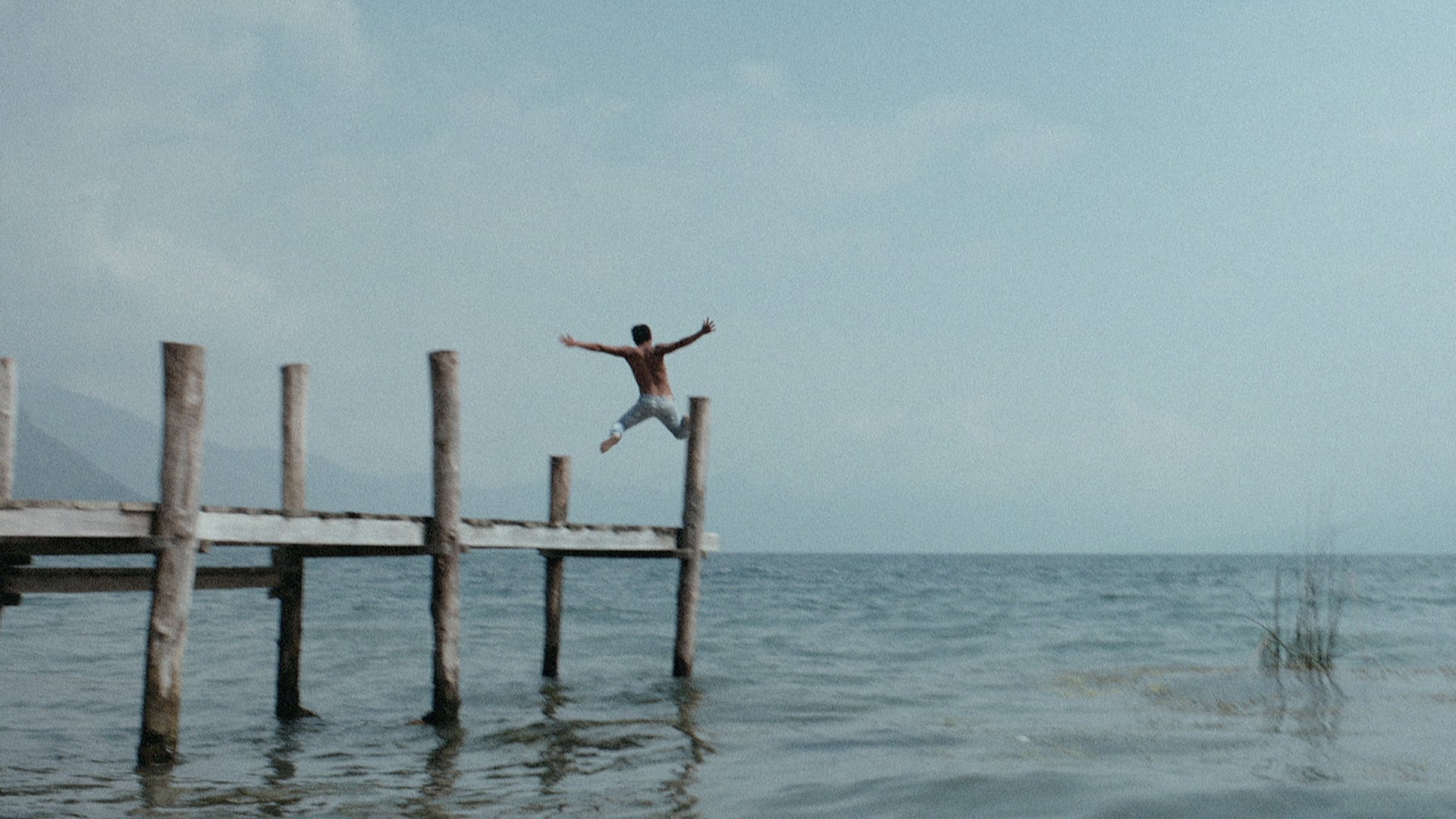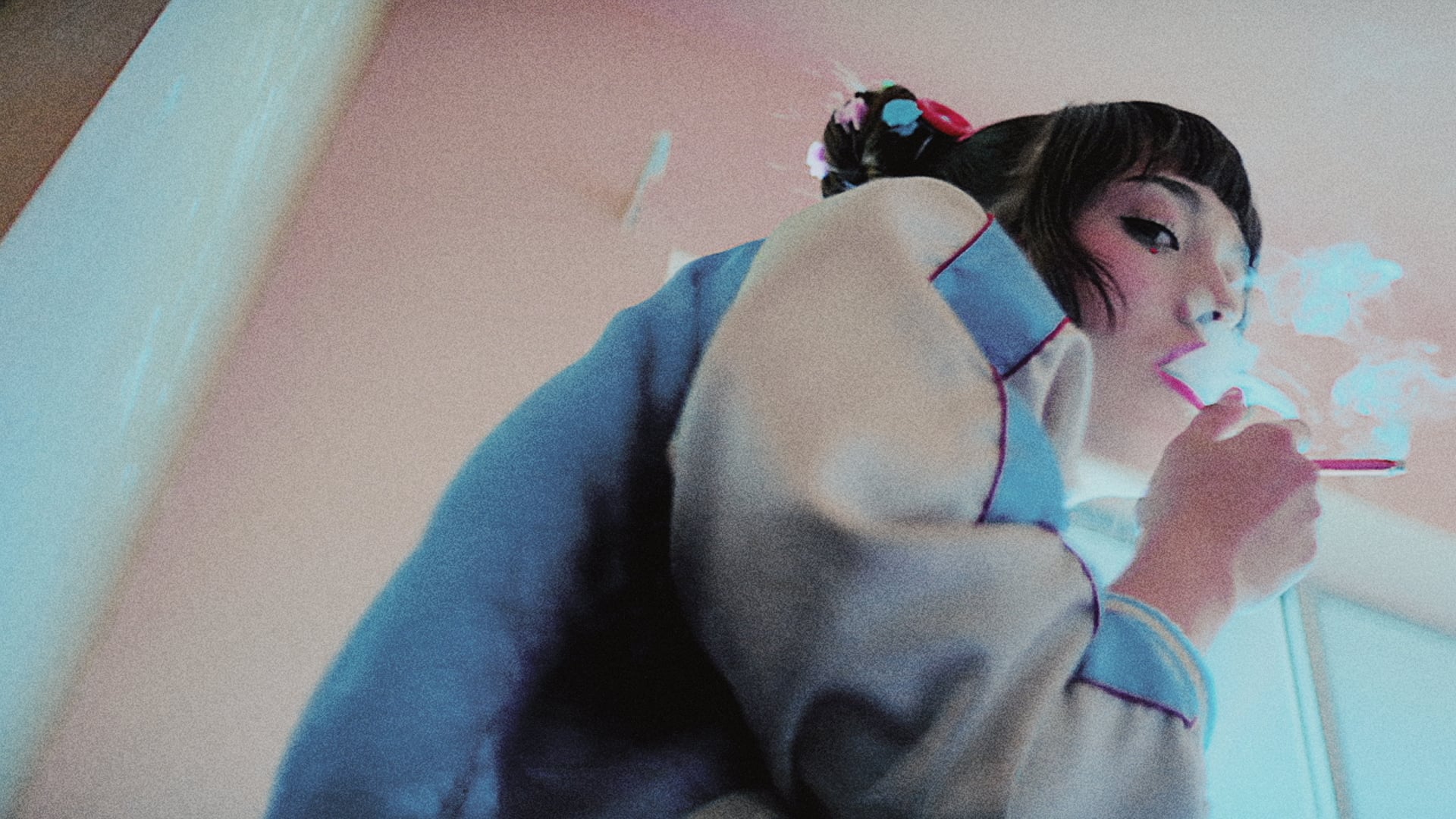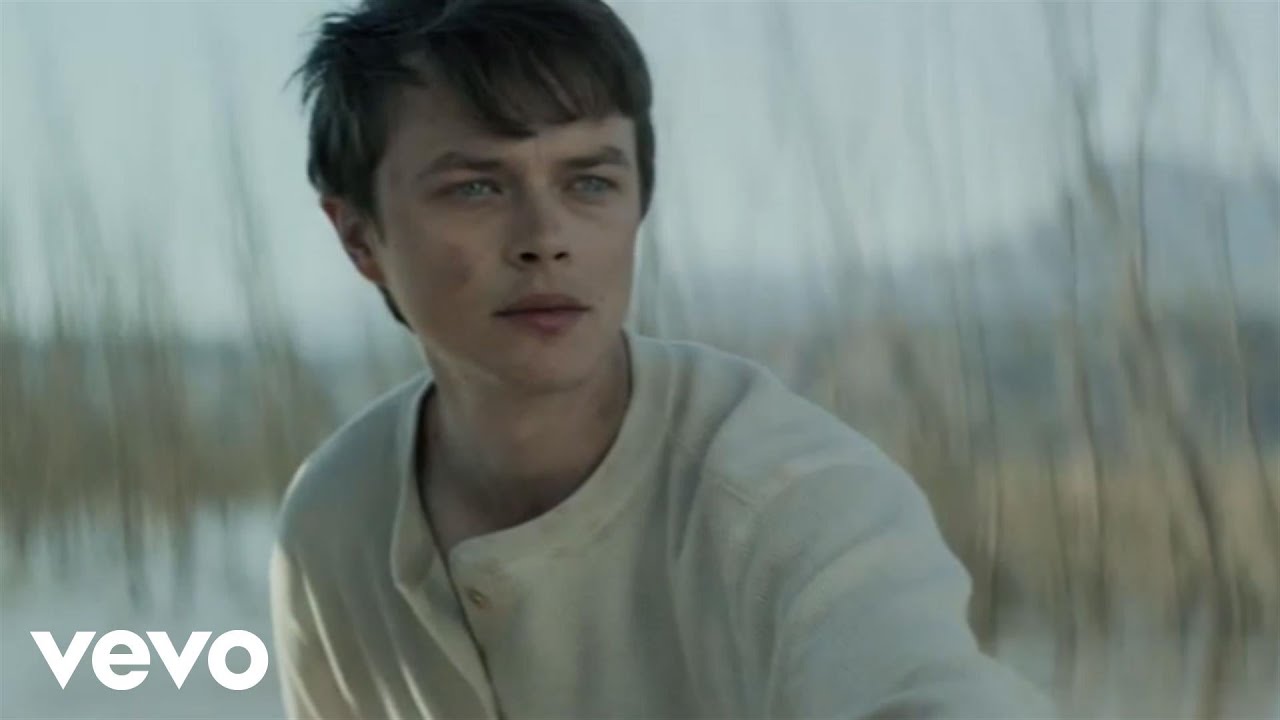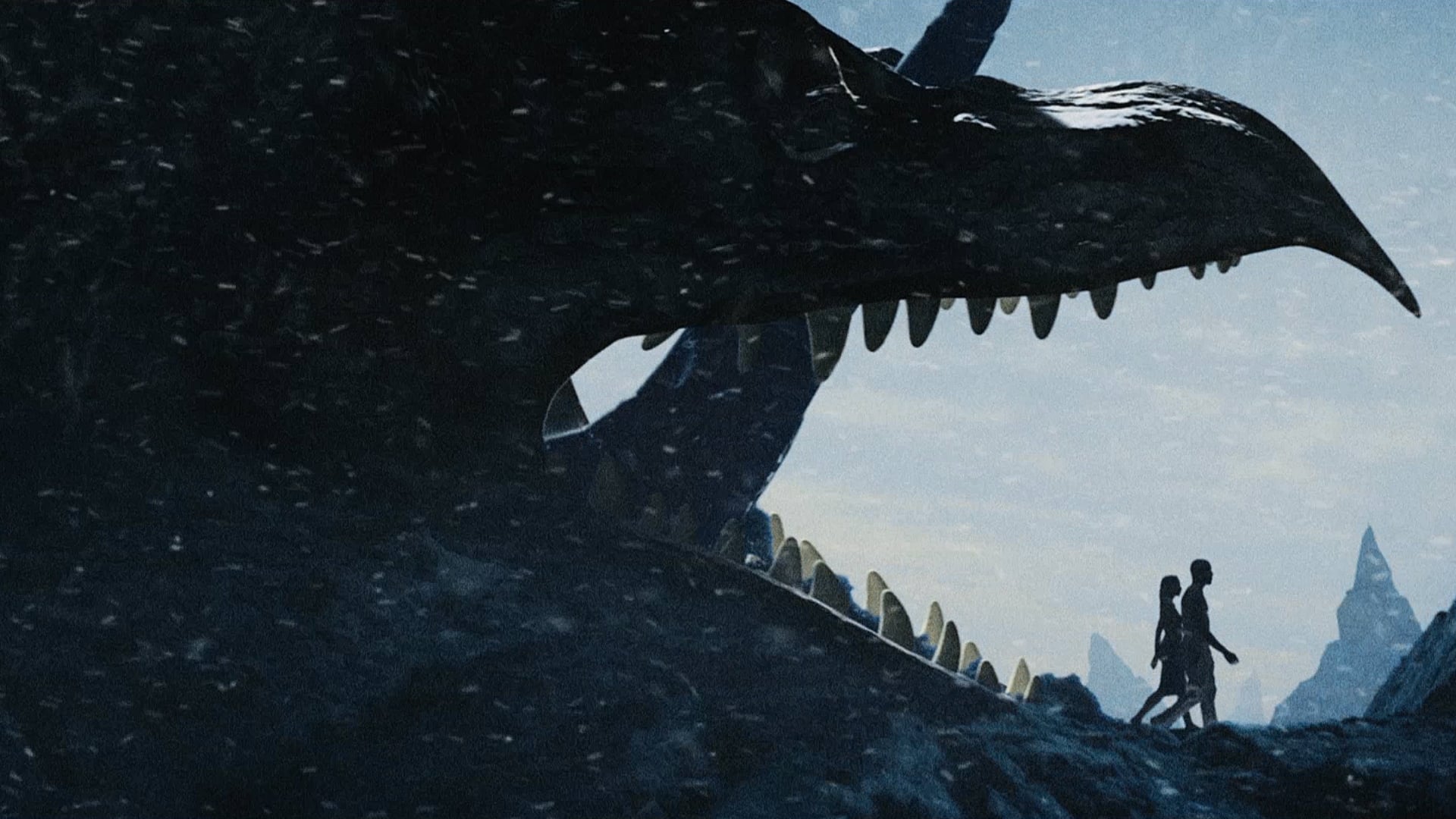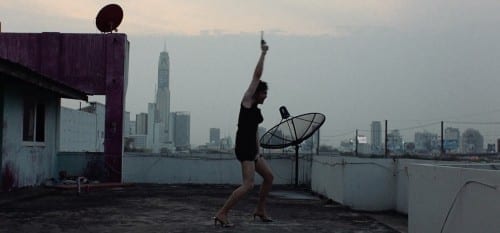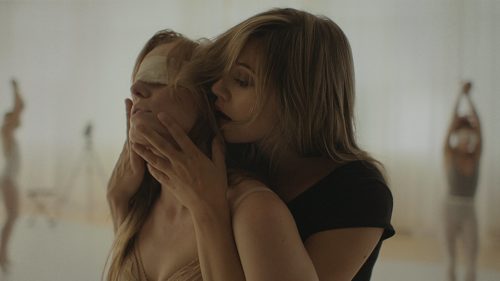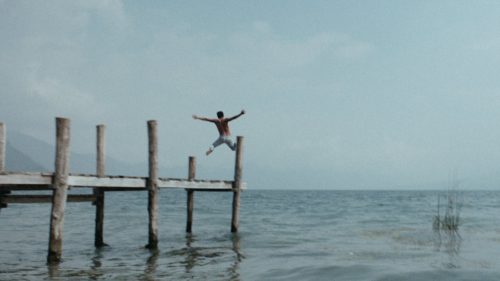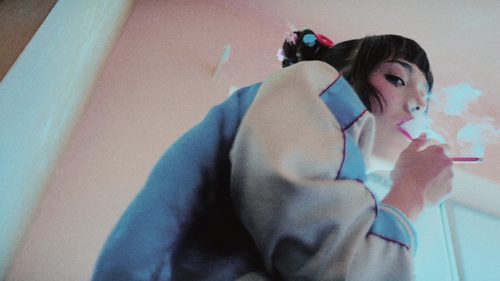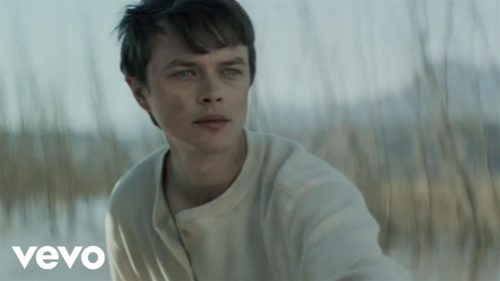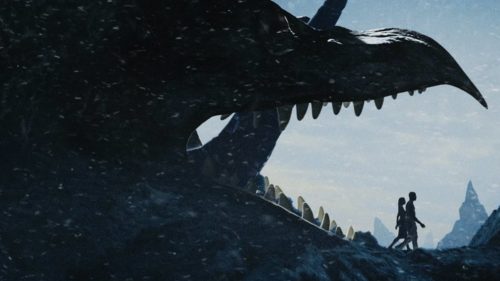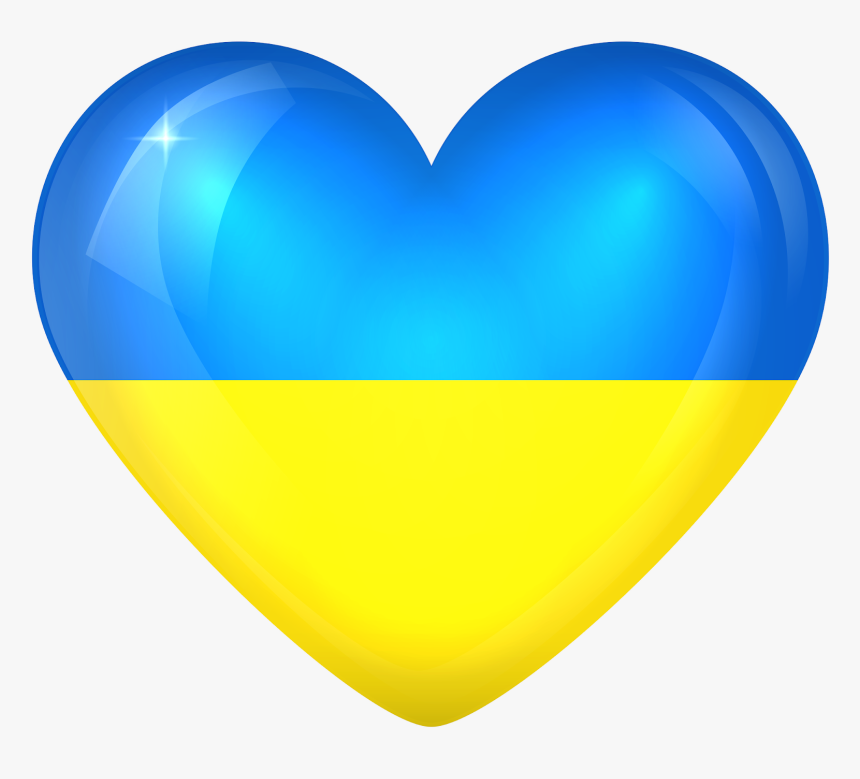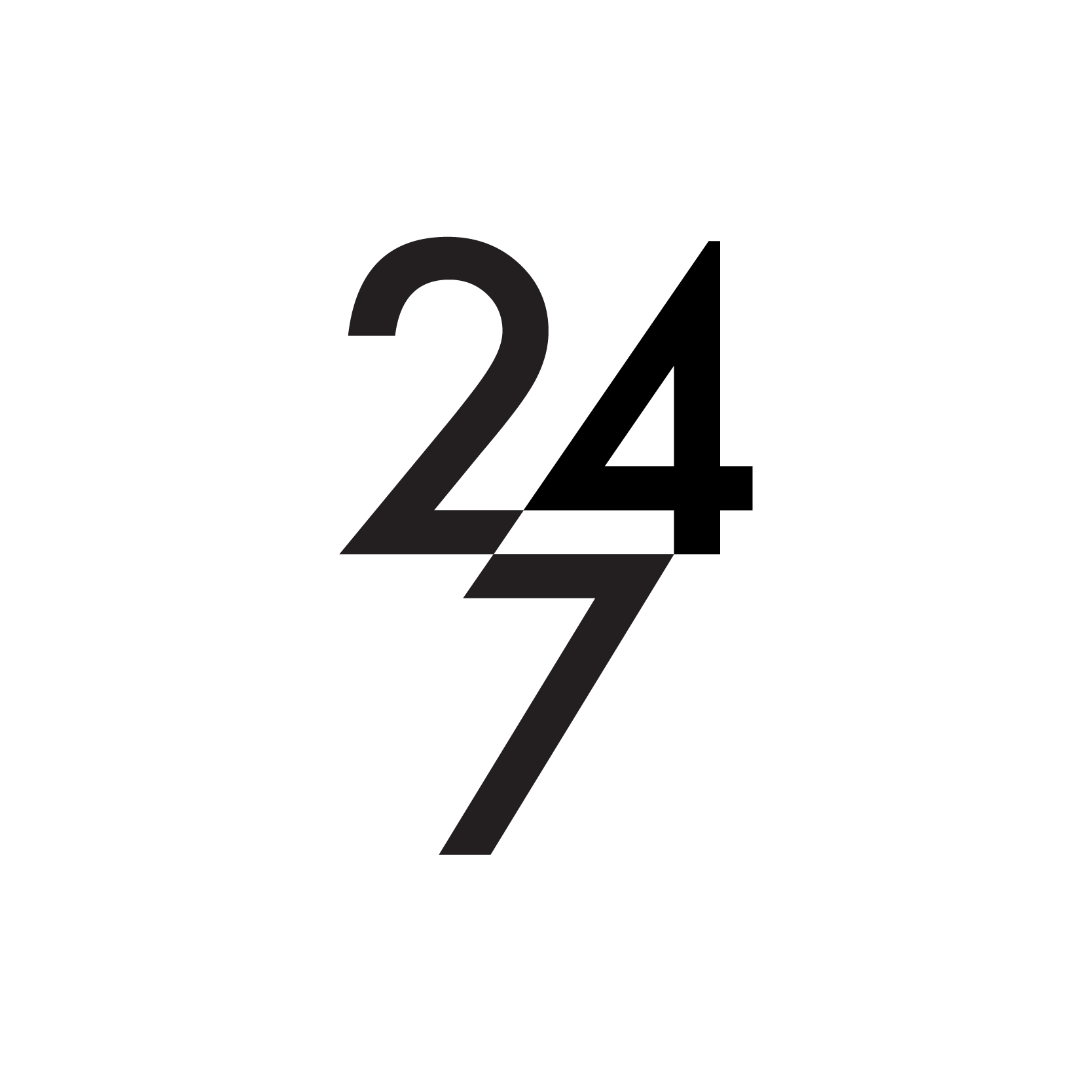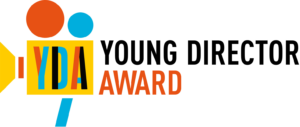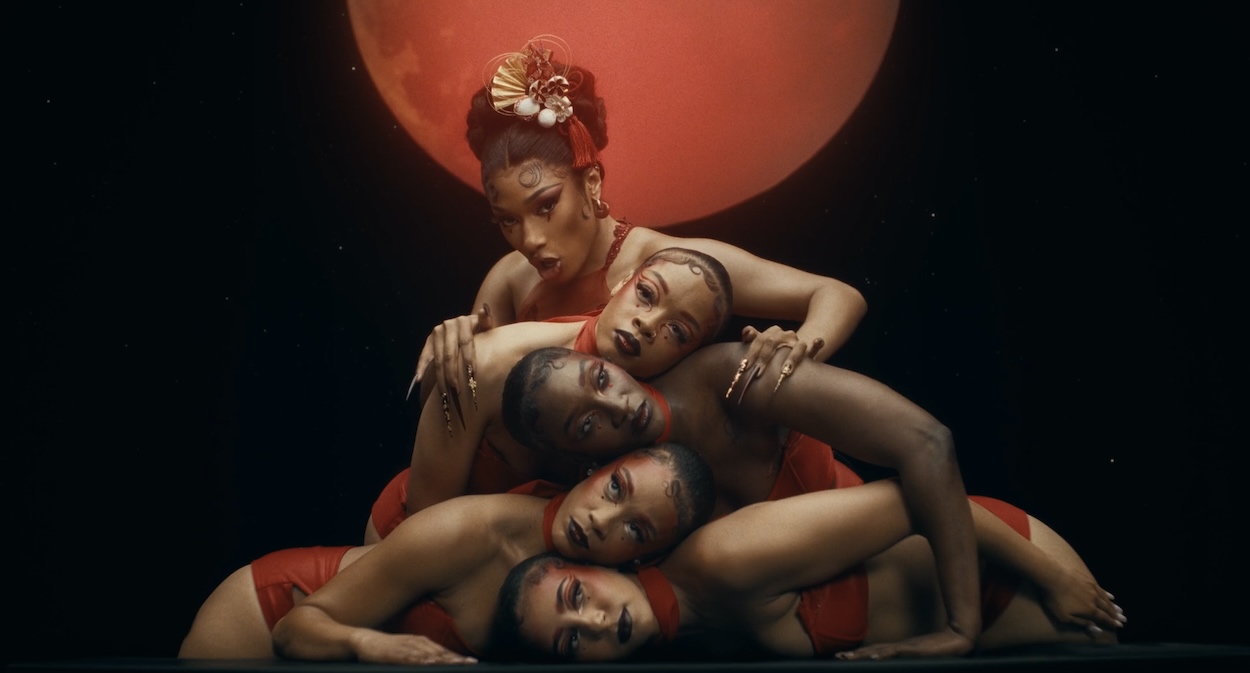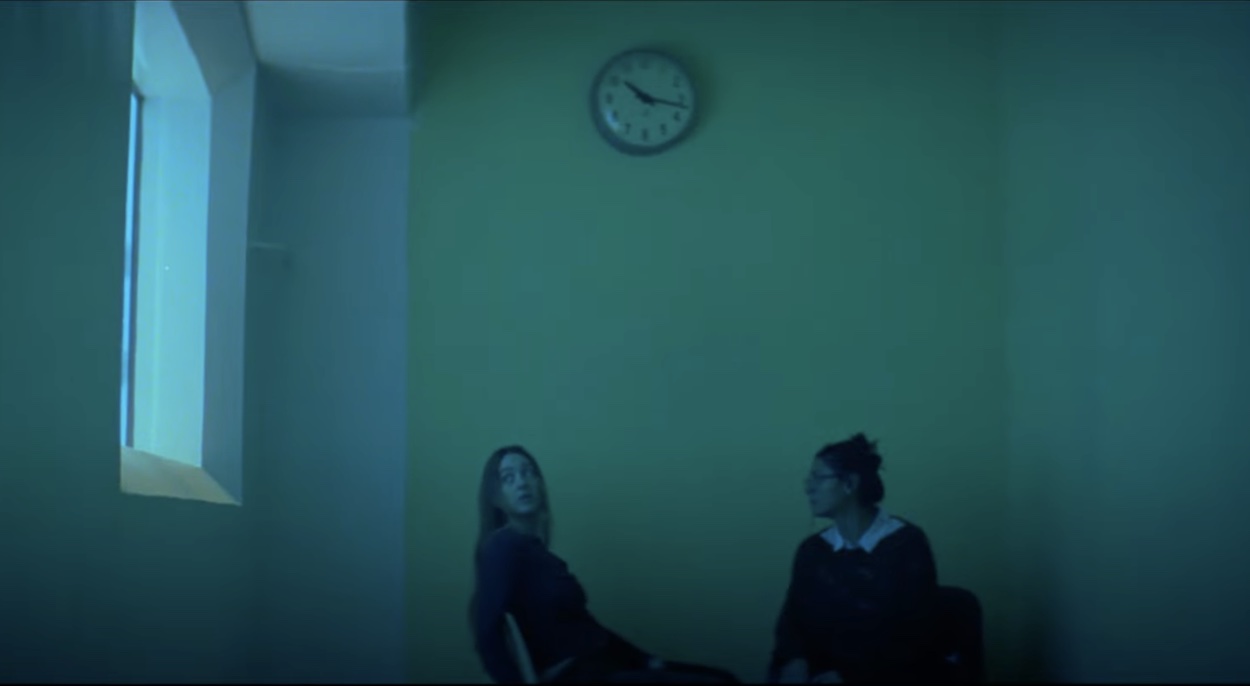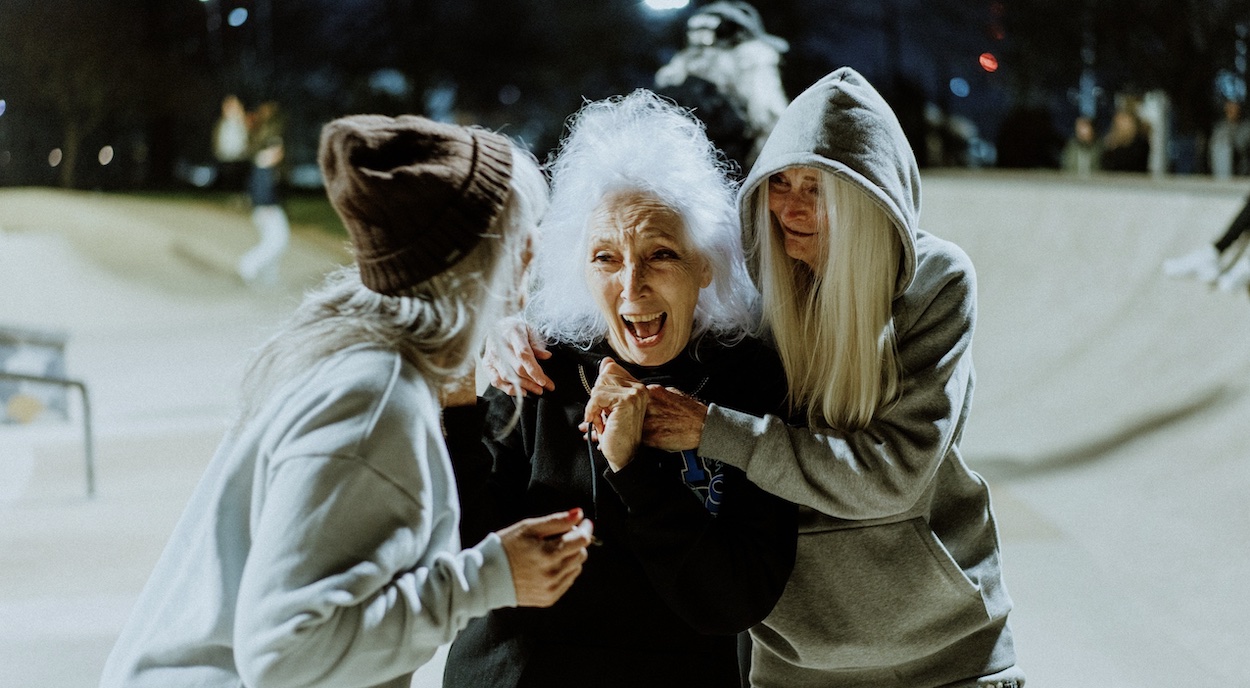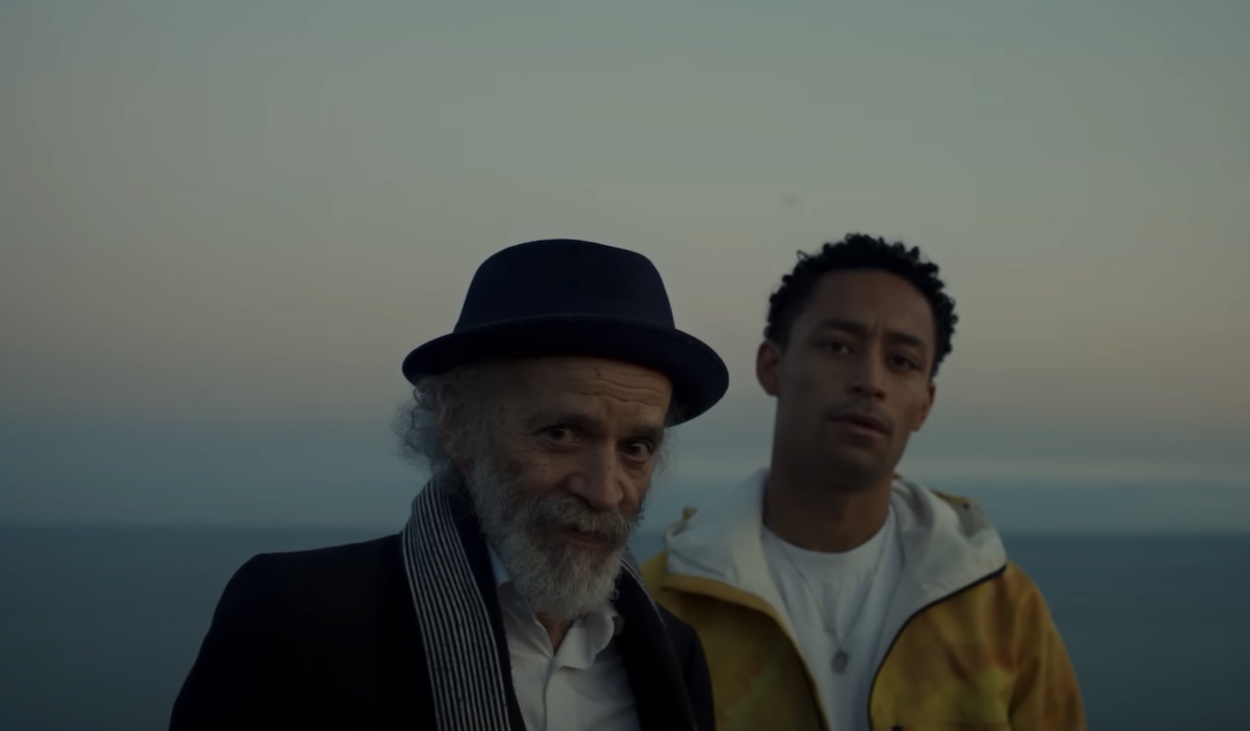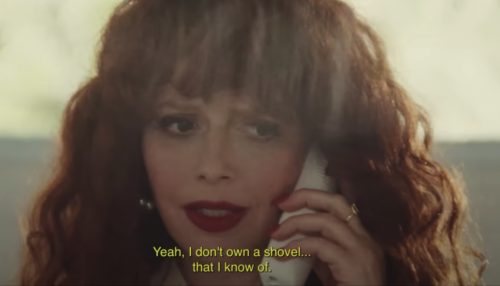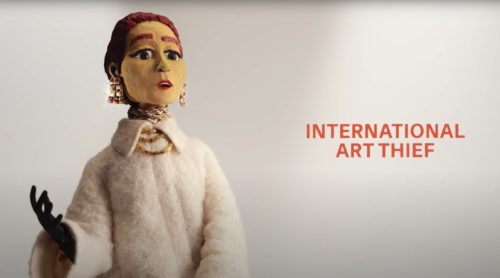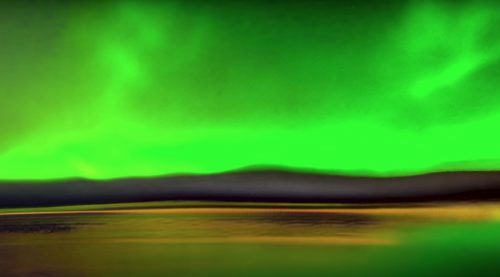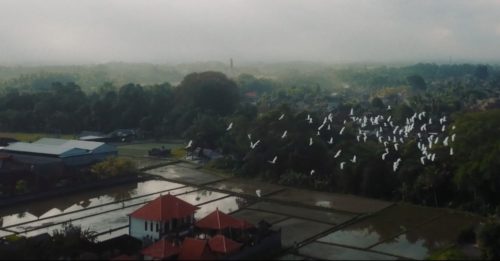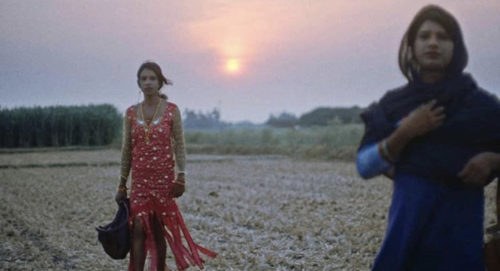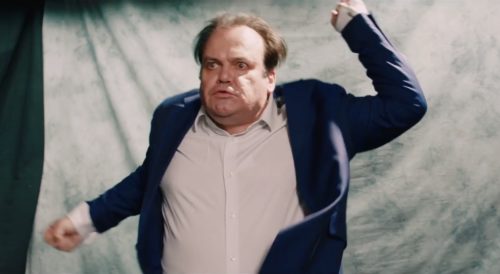Please briefly tell us about your childhood. Were you obsessed with anything in particular?
I was obsessed with Lego. I think this blend of maths, logic and creativity was very important to me. Pragmatic solutions applied to creative, existential problems. This probably still says a lot about me today.
Where do you call home, and where do you live and work now?
I currently live in a little countryside house in a village called Sainte-Angèle-de-Laval. It’s a two hours drive out of Montreal. I like to stay away from the noise.
There’s often a hide-behind-the-cushion moment in your films, when you unflinchingly take us down a dark path, for instance Life in Grey had us gasping and Still in the Cage was gripping from beginning to end. Is this in response to the briefs you receive or does this reflect your own character?
I have so far had no briefs to work with for my music videos. I love when the artist trusts that I understand their music and lets me invent a new world for them. I don’t mean that there is no collaboration in the process, but I’ve made an effort to pick projects where the artists and labels are looking for someone who wants to only use their music as a loose starting point. I feel like I’m there for them to sell a mindset, not music. Those blank card briefs are rare, but have been very important to me. I have to be able to express myself through the characters, otherwise I cannot really serve any purpose.
There’s suspense also in the beautifully shot Bet My Life video. What are the main lessons you’ve learnt about creating tension?
What I’m starting to really love as a filmmaker, is to stop worrying about what’s next. I mean it on all levels; directing actors, writing a script, editing, VFX etc. I really like to not even try to know where things are leading me and focus on what we are doing now, even if there is a script or a plan. I like to purposely forget about everything else on set and only care about the now. I actually think I can only embrace this emptiness when I’m shooting with my crew. It’s not about all the little things happening around me, in life or on set, it’s about this or these actors, giving herself/himself fully for the camera, fully immersed into the scene. All I care about, is to feel something when I look at the monitor. Then after emotions comes rhythm. A lot of things could be said about rhythm, but giving every project a carefully crafted rhythm is fundamental.
Please tell us about creating Still in the Cage, how the idea came about, how it evolved and what were the main challenges of producing the film? Did it take over your life for quite a while?
It indeed took over my life for a while, approximately five months I believe, from writing the treatment to premiering the piece with my crew, Wiwek, Skrillex, their fans and Kanye West at the Ace Hotel in LA!
OWSLA was very happy with the Point Point film, and Wiwek gave me pretty much full creative freedom on this (and I later learned that the ideas I brought coincidently reflected lots of things about his personal life). Skrillex simply asked for jungle and funky tribal elements and he was very fun to work with. He’s a special guy. From there I wrote something that I wanted to see on screen. Something that I think nobody really dares to try. It’s only later in the process that I decided to write dialogues. I took the opportunity to break the ice and try for the first time to be a screenwriter. The label never expected me to return with a 21-minute film. They were hoping more for three standalone music videos since the trilogy trick from a label is usually to save money.
But I took the opportunity to make a hybrid between a short film, music video and a TV show with cliffhangers. Most long-form music videos these days are just long…LONG music videos that only the most patient and fanatic viewers will want to finish. I really did put a lot of effort into this being enjoyable and exciting to watch from A to Z.
I have to say the team on this was formidable. From Wiwek, Skrillex, my DP Kristof, my producer Vlad, to the AMAZING producers, talents and crews in Thailand, Mathieu our sound designer… everybody gave everything they had for this. Every single thing on this job was extremely challenging, literally every single step. You cannot do this type of hard work all year long, I/we would die too young.
We love your female characters – especially the bad ass girls you cast – and similarly your guys have more depth than just being macho. What influences you when you’re creating your characters – do they resonate within you subconsciously or are they purely fantastical?
Oh thank you very much. Very much appreciate the nice words here and this question. When it comes to characters, I think it’s harder for me to articulate the process. I could talk about it for hours, since after all the technical consideration, it’s the heart of filmmaking and what makes me feel alive and emotional when I work. For now, most of the narrative stuff I created (including a nice project I’m currently finishing) are very personal, abstract ideas, behavior and often frustrations that I project onto characters that are the complete opposite of myself, whether it’s women or characters put in fantastical situations. So it’s not even subconscious, it’s a total conscious move.
But then since man’s thoughts (mine) are voices or played by a woman, it makes things very interesting… naturally and hopefully gender neutral and creative, unique. When I don’t know what to do, I just do the complete opposite of whatever comes to my mind. It’s an easy creative and pragmatic trick that can put you out of trouble. I love to create characters who fundamentally reflect madness. I try to reject reason and do my best to create personas that you can’t assume anything about. I normally tend towards affectionate unpredictable people.
Do you work with a regular acting team and how do you go about casting – street or professionals?
It’s completely different every time, a whole new casting process every single time. Sometimes it’s through casting directors, sometimes sending messages to friends on Facebook, sometimes pure luck…It really comes down to knowing your characters when you write them. Then you’ll know you have found them when you meet them. It’s all about being receptive to other humans. This way, you’re making sure that whatever they will play in front of the camera, it’s gonna work within the character. Or at least be closer to it than if you were trying to convince them of who they are playing.
I direct the actors in a very informal way… I rarely give them strict directions, I like to keep it very simple and natural. I like to let the actors do their thing and keep myself receptive to anything new they can bring to the table. I try to give them a lot of space. The context in which the scenes are set usually does half the job. It gives them incredible confidence. Then I jump around or dance after the great takes. Simple approach (for now).
Beautiful Now is a stunning series of vignettes of characters resolving some inner demon. Or are we reading too much into it? Please tell us your interpretation and thinking behind the narratives.
Ah, this one was special. It was my first attempt at developing characters. And it was my first video without VFX. I really took the opportunity to learn and use it as an exercise. I wanted to test the audience and see how much of the five characters and five stories they would be able to absorb in three minutes. I wanted to try putting short stories next to uplifting mash-ups of vignettes and see if the viewers would be able to get to know personally and feel five different human beings from around the world under four minutes. I don’t think I succeeded highly at it, but I do know there are definitely great contrasting emotions going on in there. We shot for 14 days straight in Guatemala and Prague. Only one of the characters was an actor. Extremely intense human experience here, shared with the cast, crew and unbelievable encounters with the local folks.
Please tell us about your relationship with VFX and how you use effects in your films.
Well I’ve been doing my own VFX for a long time. They can be anywhere. Sometimes I really want you to notice them, sometimes they are impossible to notice for the common viewer. I will put it this way… I see my thinking process as closer to a painter and or a sculptor, but the way I put the ideas into film is a lot more logical, streamlined. So the VFX allows me sometimes to be free like a painter, however using very technical tools. It’s a lot of fun, and allowed me for instance to put mountains in the river sequence of the Still in the Cage film. It really made you feel lost in the middle of nature, when actually it was just on a normal, shitty river with urbanity behind. But I’m trying to use VFX less and less, and focus on the characters. As a matter of fact, I try to use VFX now only when it enhances the characters or their context. And I’m tired of sitting in front of my computer!
When you’re creating narratives are VFX an integral part of your script from the start or do they evolve later in your creative process? Do you use VFX to embellish emotions, or to create another dimension in your storytelling, like creating another character?
When I write something, I just write whatever I want. That’s the perk of being able to do all the post-production myself at home. I don’t even ask myself if this or that idea is achievable. Gives me an almost full creative freedom, but makes me a slave at the same time.
Do VFX feature naturally in your day-to-day imagination?
It used to be the case when I was young. I started to learn most of the softwares I still use today when I was 12. But for the last couple years VFX has become a burden, so it’s not in my head anymore at last.
Do you collaborate closely with an effects artist? Where does your understanding of post effects come from – have you worked in post production or are you self-taught?
Fully self-taught. I have a degree in fine arts so I think painting really helped me with colour grading. I find it better to just use my eyes to understand how reality works. I think my understanding of the visual mediums definitely comes from my obsession of always blending logic and madness at the same time in the process. The softwares become a brush, a musical instrument and you just groove with it, never listen to anybody who tells you what’s wrong or right. Like Jazz I guess.
I never did any post-production for other projects other than mine. I’ve always considered myself a director. All that being said, I love working with my good friend Paul Laberge, an amazing all around artist and a very special human being, also with the crazy guys at Gloria FX and sometimes Josh Sherett at the Mile-End workshop. Pretty much the only collaborators in post-production I’ve ever worked with so far. I keep it very friendly and small when I need VFX help. But I’m about to shoot a commercial in London and I’ll be very happy to hand over all the fastidious work to the good people at The Mill. Can’t go wrong.
Please tell us about your “normal” creative process for filmmaking. We noticed that you often edit your own work too which, along with VFX, must be an intense procedure.
Yeah, and colour grading as well. Madness comforts me. I guess I like the process. Unfortunately I’m one of those who can’t feel like I did my best until it hurts really bad. That being said, on set it’s the total opposite. I put great efforts in trying to make every shoot an uplifting, happy, beautiful and life-changing experience, when I can.
To what extent do you map everything out in pre-production – for instance do you storyboard in detail – or do you have a more spontaneous approach?
No, storyboards aren’t a good idea for me. If I do them, it will generally mean that I don’t trust myself or once in a while for shots that are very wide, potentially full of matte paintings. I noticed that people in filmmaking aren’t often comfortable with wide shots and landscapes. They have a hard time using them as a narrative tool and understanding how they will help a scene…so using storyboards in those cases can really help the efficiency of the process. And it’s also a lot harder to communicate them, especially when there will be loads of VFX. Something else maybe that painting taught me.
You seem comfortable shooting in a variety of locations – from Asia, Mexico, the sweeping landscapes of Canada… Are these places that you have previously travelled to and know?
Not really. I never really travelled before travelling for shoots. It’s very much in line with the VFX process…I write whatever I want and travelling to those places is a consequence of that. I love to force the crew and myself into new cultures, it creates lovely clashes and really helps make all the jobs more raw and exciting. I try to show up with no expectations and assumptions. Not assuming anything about strangers is the most fundamental respect to me.
(BTW, the latest countries I shot in were Thailand, Guatemala, Czech Republic, Iceland, New Zealand, but never Canada believe it or not).
Where do you look for creative inspiration?
Nowhere and everywhere really. I guess it’s a mixture of everything I’ve seen and liked in my life. I don’t really actively try to find inspiration because I very easily get distracted by “references”. I try to work with ideas that are as pure as possible, ideally born from imagination and artistry. It’s idealistic and maybe sounds pretentious, because at the end of the day the work will always draw comparisons to other things, but I do my best to steer the ship in that idealistic direction.
If you can say, what are your next projects?
A very exciting commercial with PRETTYBIRD and W+K, a nice short film/music video that I recently shot in Montreal and I’m starting development of an exciting feature film project with the good folks at Gotham Group. It’s very early in the process, but very promising.
Is there anything else you’d like to share?
Not really, but thank you very much for these questions. They put me out of my comfort zone and it was fun!
LINKS
Wiwek & Skrillex, Still in the Cage
Cast:
Book Kantajinda (Book)
Phakaporn Lertchamchongkul (Wow)
Champagne Nuttanun (Champagne)
Ingkarat Jaraswongkosol (Kat)
Writer/Director: Jonathan Desbiens
Producer: Vlad Cojocaru
Director of Photography: Kristof Brandl
Commissioner: Emmanuelle George
Sound Design/Sound Mixing: Mathieu Morin @ La Majeure
Edit/Colors/VFX: Jodeb
Additional Music Remix: Jake Millar, Jodeb
Produced by Vision Films, Colossale Films and OWSLA
Thailand Production Services: Naked Film
Supporting Cast:
Suraset Nimorn (Thief)
Jirayu Jareechaiyothin (School boy with gun)
Sitsan Pinyoteerachod (School boy friend)
Tony Skarberg (Client #2)
Jonathan Samson (Client #3)
Kerkhirun Prakprasert (Boat owner)
Marut Kalmensah (Tribe leader)
Dancers:
Jedsada Tharnnop
Krid Prarom
Chanittha Dharmsthiti
Nattida Ngamsiri
Rinyapas Sirisamanphong
Kittiya Kaeomanee
Pranvas Siripongpun
Natee Malaithong
Praiwan Kanakas
Marut Kalmensah
Naked Films team credits:
Executive Producers: Yingyosh Watthanasin, Nutthiya Noomrukyam
Producer: Janyaluck Khamdaeng
1st Assistant Director: Pattaris Imsumrunrut
Art Director: Vuthinan Duriyapraneet
Prop Master: Supachok Kuptapan
Location Manager: Thitikorn Sriborisut
Production Manager: Nattanan Kaewkitinarong
Production Assistants: Danai Kantiya, Chanoknoet Podjananupak, Bancha Choungrangse, Saovaluk Toonim
Casting Directors: Patitta Thinrat, Sirinthip Chaowalit
Assistant Casting Directors: Triyanuch Choomuenwai, Chutamard Hutthapong
Stylist: Kittisak Prasarndee
Choreographer: Thatcha Kosolprapha
Gaffer: Phaiphat Shalom
Make Up Artist: Amornsak Bautrat
Assistant Make up Artist: Naradhip Faro Paspirom
Camera & Grip Crews: Camera Corner Co.,Ltd.
Lighting Crews: You Want Light Co.,Ltd.
Boats Rigging: Prasit Kaewthabthim
VISION (visionfilmco.com)
Executive Producer: Geoff Mclean
Executive Producer: Stacy Vaughan
COLOSSALE (wearecolossale.com)
Executive Producer: Vlad Cojocaru
OWSLA (owsla.com)
Executive Producer: Sonny Moore
Point Point, Life in Grey
Written and directed by Jodeb
Cinematography by Kristof Brandl
Producer: Vlad Cojocaru
Victoria: Victoria Diamond
Amy: Amy Gardner
Dancers: Jasmina Parent, Brittany Fine, Laurie-Ann Lauzon, Miranda Chan, Saskya Pauze-Begin, Sarah Steban, Catherine Dagenais-Savard, Shanie Blais
Production manager: Max Walker
Executive producers at Vision: Stacy Vaughan, Geoff Mclean
Executive producer at Antler: Sach Baylin-Stern
Video commissioner: Kevin Kloecker
Choreographer: Amy Gardner
Stylist: AJ Helie
Steadicam operator: Hugo Longtin
1st AC: Anthony Hunneault
Art director: Greg Nowak
Art directors assistants: Patrick Binette, Christian Beaudoin
Make-up/Hair: Jessica La Blanche, Catherine Lemay
Production assistants: Stefan Petrisor, Alex Negru
Sound design, additional music: Nicolas Petitfrere
Editing, colors, VFX: Jodeb
Additional VFX, digital cleanup: Paul Laberge
Point Point management: Jordan Cardoso
Label: OWSLA + Record Record
Produced by Antler Films and Vision Films
Porter Robinson, Lionhearted
Written and directed by Jodeb
Producer: Courtney Anne Davies
Director of photography: Chayse Irvin
Executive producer: Geoff Mclean
Cast: Porter Robinson, Eugenie Grey, Essy Park, Elleanor Yamaguchi, Jennifer Don and Zoe Flood
Stylists: Elleanor Yamaguchi and Elise Velasco
Production support: Bret Rea
Assistant production support: Alex Keller
1st Assitant director: Allen Scudder
Production assistants: Mark Chase, Trevor Hugle and Adam Haas
Drivers: Jedi Brunoehler, Trevor Hugle and Steve Bock
1st assistant camera: David Edsall
2nd assistant camera: Diona Mavis
Gaffer: Tyler Hart
Best boy electric: Tom Peake and Trent Turner
Swing: Sean Delahunt
Key grip: John Mijares
DIT: Steve Doyle
Hair and make-up: Joanne Adolfo
Editing, Matte Painting and Color Grading: Jodeb
Lead VFX: Jodeb
VFX and Design: Paul Laberge
Additionnal glitch VFX: Workshop Mile-end
Rocket Launcher sequence VFX: Coyote Post
Production designer: Alex Delgado
Art director: Cody Fusina
Video comissioner: Targa Sahyoun
Management: Aaron Greene and Neal O'Connor
Workshop Mile End 3D & Compositing: Guillaume Charron, Jonathan Fleming-Bock, Benoit Bourgoin
Workshop Mile End Art direction: Lucy Rybicka
Workshop Mile End VFX Supervision & VFX Artists: Louis Paré, Josh Sherett
Workshop Mile End Coordination: Guylaine Lavoie
Coyote Post VFX: Nick Frew
Coyote Post VFX Production Supervisor: Julie Hansen
Coyote Post Producer: Rik Michel
Imagine Dragons, I Bet My Life
Written and Directed by Jodeb
Director of Photography: Yon Thomas
Producer: Paul Bock
Executive Producer: Geoff Mclean
1st Assistant director: Kenneth Taylor
Swedish House Mafia, Reload
Written and Directed by:Jodeb
Director of Photography:Yon Thomas
Producer: Courtney Anne Davies
Executive Producer: Geoff Mclean
Steady cam Operator: Mic Waugh
Iceland Producer: Búi Baldvinsson
Iceland Coordinator: Alfreð Gíslason
Guatemala Fixer: GG @ The Bigger Picture Pictures
3D Monster Creation and Animation: Paul Laberge
Snowstorm Compositing: Josh Sherrett
Grips (Iceland): Hogni Marzellius, Thorarinn Thordarson
Costumes: Annie Jewell
Sound Design: Justin Hori, Josh Good
Editing, VFX, Matte Painting, Color Grading, Compositing and Still Photography: Jodeb
Additional Compositing, Matte Painting and 3D Modeling/Animation: Paul Laberge, Josh Sherrett
